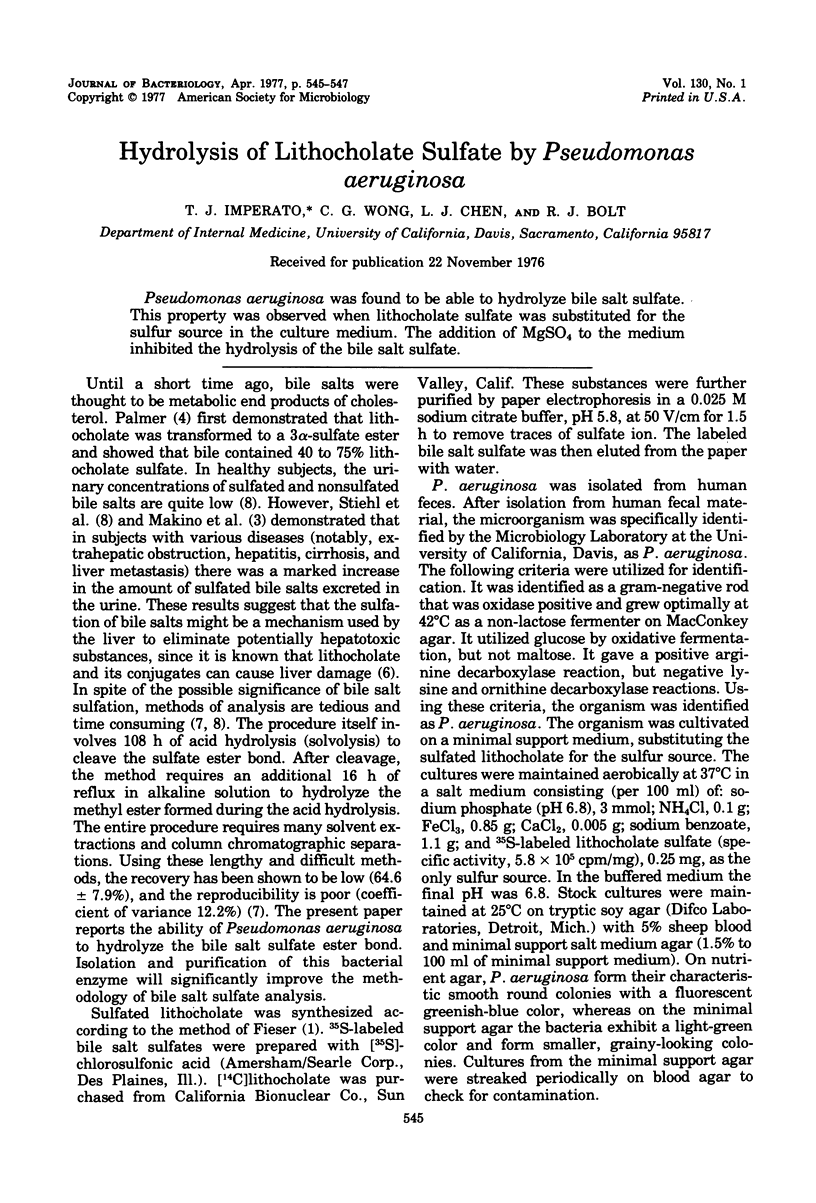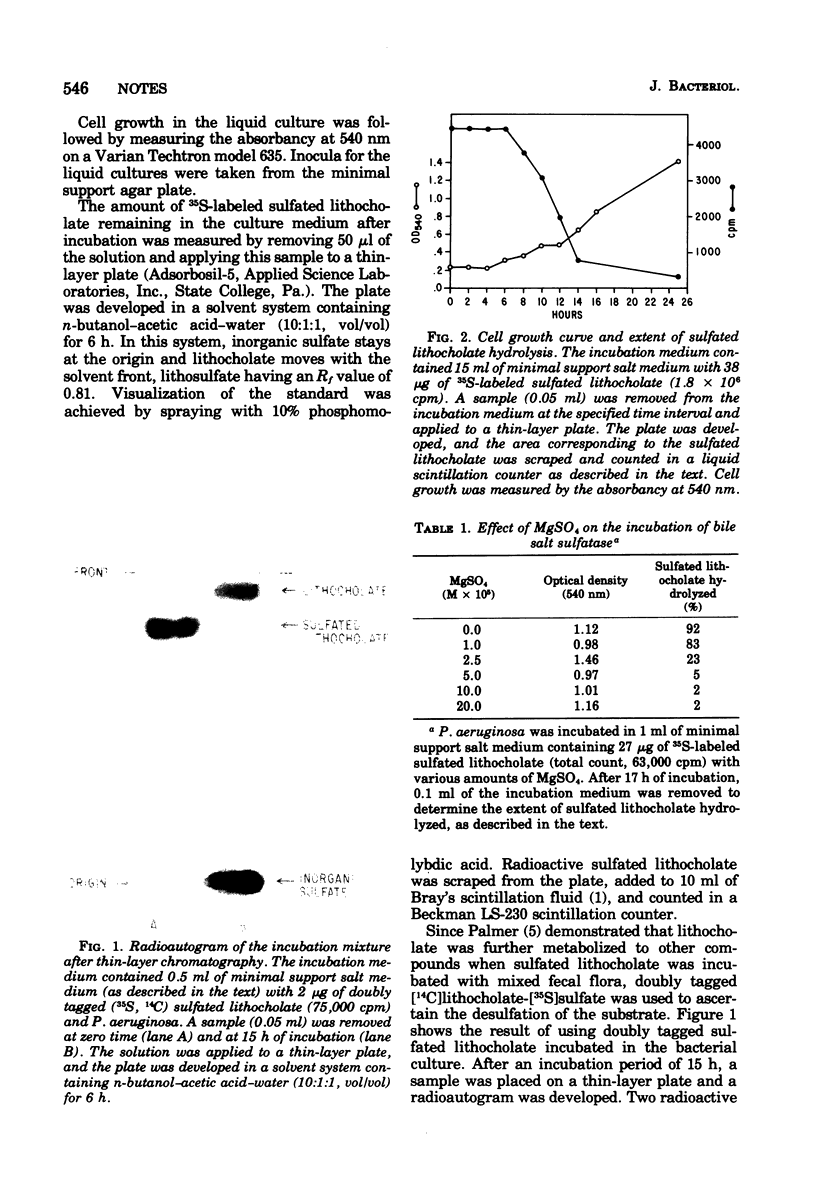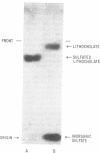Abstract
Pseudomonas aeruginosa was found to be able to hydrolyze bile sulfate. This property was observed when lithocholate sulfate was substituted for the sulfur source in the culture medium. The addition of MgSO4 to the medium inhibited the hydrolysis of the bile sulfate.
Full text
PDF


Images in this article
Selected References
These references are in PubMed. This may not be the complete list of references from this article.
- Palmer R. H. Bile acids, liver injury, and liver disease. Arch Intern Med. 1972 Oct;130(4):606–617. [PubMed] [Google Scholar]
- Palmer R. H. The formation of bile acid sulfates: a new pathway of bile acid metabolism in humans. Proc Natl Acad Sci U S A. 1967 Sep;58(3):1047–1050. doi: 10.1073/pnas.58.3.1047. [DOI] [PMC free article] [PubMed] [Google Scholar]
- Shinozaki K., Nakagawa S. Sulfated bile acid in urine of patients with hepatobiliary diseases. Lipids. 1973 Jan;8(1):47–49. doi: 10.1007/BF02533240. [DOI] [PubMed] [Google Scholar]
- Stiehl A. Bile salt sulphates in cholestasis. Eur J Clin Invest. 1974 Feb;4(1):59–63. doi: 10.1111/j.1365-2362.1974.tb00373.x. [DOI] [PubMed] [Google Scholar]
- Stiehl A., Earnest D. L., Admirant W. H. Sulfation and renal excretion of bile salts in patients with cirrhosis of the liver. Gastroenterology. 1975 Mar;68(3):534–544. [PubMed] [Google Scholar]



